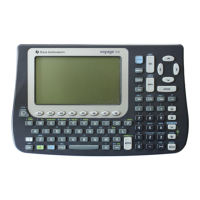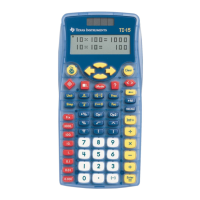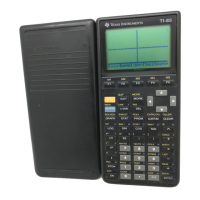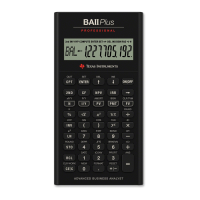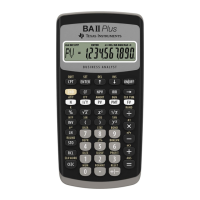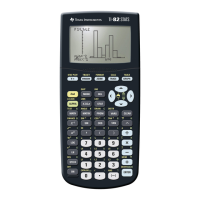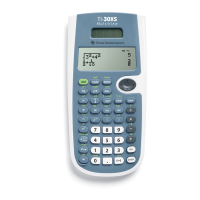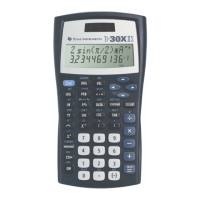Numeric Solver 666
Refer to a function or equation
defined elsewhere.
Notes:
• Do not use system function
names (such as
y1(x) or r1(q))
as simple variables (
y1 or r1).
• Be careful with implied
multiplication. For example,
a(m2+m1) is treated as a
function reference, not as
a†(m2+m1).
Suppose you defined y1(x) on either
the:
•Y= Editor:
y1(x)=1.25x†cos(x)
– or –
• Home screen:
Define y1(x)=1.25x†cos(x)
In the Numeric Solver, you then would
enter:
y1(x)=0 or y1(t)=0, etc.
Type an expression without an =
sign.
Note: When you define the
variables, you can either define
exp or solve for it.
e+f
Nln(g)
After you press
¸, the expression
is set equal to a system variable called
exp and entered as:
exp=e+fNln(g)
Recall a previously entered
equation or open a saved
equation.
Note: After you press
¸ the
current equation is stored
automatically to the system
variable eqn.
Refer to the applicable heading later in
this section.
You can: For example:
The argument does
not have to match
the one used to
define the function
or equation.

